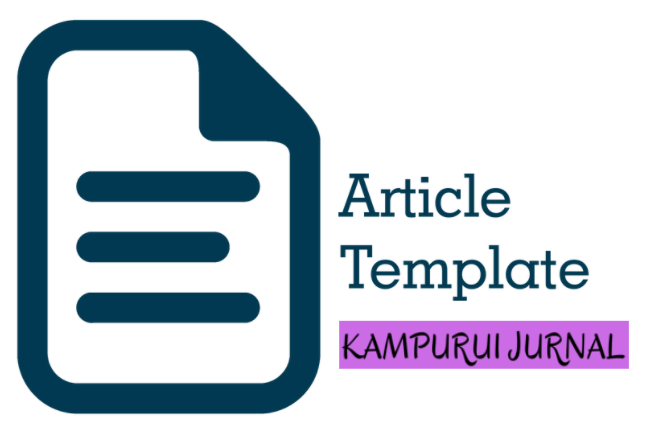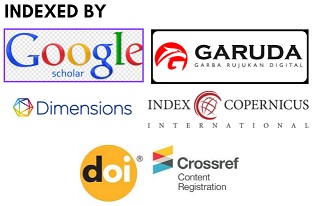Gambaran Karakteristik Penderita Diabetes Mellitus Pada Beberapa Puskesmas di Kabupaten Gorontalo
DOI:
https://doi.org/10.55340/kjkm.v1i1.50Keywords:
Description, Characteristics, Diabetes MellitusAbstract
Diabetes Mellitus is a chronic metabolic disorder caused by inadequate insulin produced of the pancreas, or a state of the body that cannot use insulin effectively. During the last decade the prevalence of diabetes in low and middle income countries has increased. In 2018, Gorontalo Province ranks eighth for the highest prevalence of Diabetes Mellitus in Indonesia. The purpose of this study aims to description of the characteristics patient with Diabetes Mellitus in several Health Center in Gorontalo District. The study was an observational with descriptive design. The sample in this study was 313 people with diabetes mellitus who were selected as samples in Gorontalo District, who were selected by stratified random sampling technique. Univariate data analysis. The results of this study indicate that there are five health center studied, namely Limboto, Dungaliyo, Tabongo, Batudaa, and Pulubala Health Center. From the 313 respondents suffering from Diabetes Mellitus, 224 people (71.6%) were female, 230 people (73.5%) in the adult category, 271 people (86.6%) were married, 202 people (64.5) %) not working, 94 people (30%) have education levels only up to elementary school level, and 265 people (84.7%) with new status suffer from diabetes mellitus (<10 years). By looking at patient characteristics from the results of the study, it is expected that the health center as a health service provider can improve the Diabetes Mellitus prevention program, especially for preventive and promotive programs.
Downloads
References
Anas, Yance., Widya Astuti Rahayu, dan Tri Murti Andayani. (2008). Kualitas Hidup pada Pasien Diabetes Mellitus Tipe 2 Rawat Jalan di Rumah Sakit Umum Tidar Tangerang. Jurnal Ilmu Farmasi dan Farmasi Klinik, 5 (1) : 10-13.
Dinas Kesehatan Kabupaten Gorontalo. (2017). Data Penderita Diabetes Mellitus 3 Tahun Terakhir. Kabupaten Gorontalo.
Infodatin Pusat Data dan Informasi Kementerian Kesehatan RI. (2014). Situasi dan Analisis Diabetes.
IDF (International Diabetes Federation). (2015). Diabetes Atlas Seven edition.
Meidikayanti, Wulan dan Wahyuni, Chatarian Umbul. (2017). Hubungan Dukungan Keluarga dengan Kualitas Hidup Diabetes Mellitus tipe II di Puskesmas Pademawu. Jurnal Berkala nEpidemiologi, 5 (2) : 240-252.
Nugrahaeni, D. (2014). Konsep Dasar Epidemiologi. Jakarta: EGC. Retnowati, N., Satyabakti, P. (2015). Hubungan Dukungan Keluarga dengan Kualitas Hidup Penderita Diabetes Mellitus di Puskesmas Tanah Kalikedinding. Jurnal Berkala Epidemiologi, 3 (1): 57-68.
Riskesdas (Riset Kesehatan Dasar). (2018). Hasil Utama Riskesdas. Penelitian Kesehatan Badan Penelitian dan Pengembangan Kesehatan, Kementerian Kesehatan RI.
Sari, R. M., Thobari, J.A., Andayani, T. M. (2011). Evaluasi Kualitas HIdup Pasien Diabetes Mellitus Tipe 2 Yang diterapi Rawat Jalan dengan Anti Diabetik Oral di RSUP Dr. SARDJITO. Jurnal Manajemen dan Pelayanan Farmasi, 1 (1): 35-42.
Setiyorini, Erni dan Wulandari, Ning Arti. (2017). Hubungan Lama Menderita dan Kejadian Komplikasi dengan Kualitas Hidup Lansia Penderita Diabetes Mellitus Tipe II. Prosiding Seminar Nasional dan Gelar Produk, 17-18 Oktober 2017. Hal. 75-82.
Tamara, E., Bayhakki, N., Fathra. (2014). Hubungan Antara Dukungan Keluarga dan Kualitas Hidup Pasien Diabetes Mellitus Tipe II di RSUP Arifin Achmad Provinsi Riau. Jurnal Online Mahasiswa Perpustakaan Fakultas Keperawatan, 1 (2) : 1-7
WHO. (2016). Global Report On Diabetes.
Zulkifli, A., Usman, A.N., Raya, I. (2013). Solusi Prediabetes dengan Propolis. Makassar: Masagena Press.














